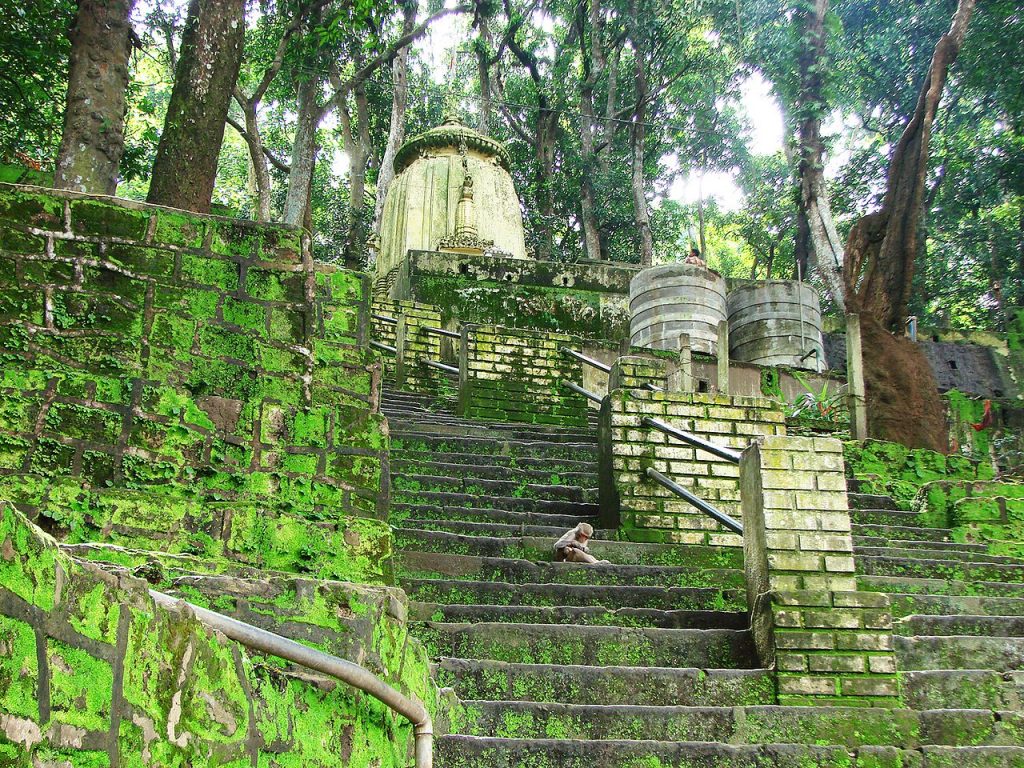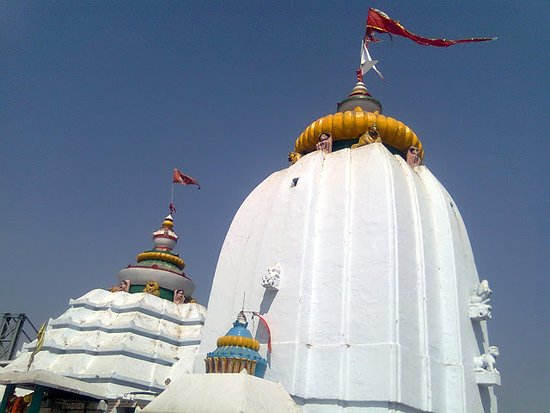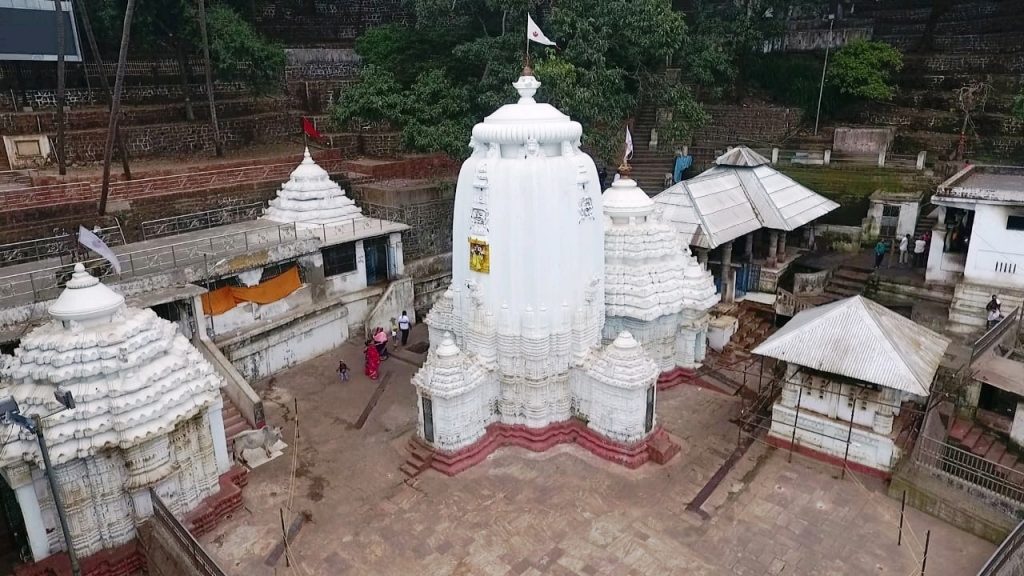In Hindu Puranas and mythological descriptions, the Kailash Mountain range in the Himalayas is believed to be the living place of Lord Shiva And Goddess Parvati Mahadev Chandrasekhar Temple . Here in Odisha, Kapilash Temple is the identical spot with the Kailash which is the legendary abode of Lord Shiva.
Surrounded by green forest, the Kailash Temple is enshrined on the loftiest peak of Kapilas Range in the Dhenkanal District. Otherwise known as Chandrashekhar Mahadev Temple, it carries a great significance of history and devotional importance of Odisha Mahadev Chandrasekhar Temple.
About and Location
Along the boundary of Cuttack and Dhenkanal district, lies on the hill top, the abode of Lord Mahadeva, known as Kapilash Temple. The loftiest of numerous peaks, The Kapilash holds the ancient temple that makes it an attraction for the tourists.

Lord Shiva is believed to live in The Kailash. The temple in Ellora, Maharashtra resembles the mythological one. Kapilash, also called as the Kailash of Odisha serves as an attraction of Dhenkanal district. The region was once part of the ancient capital of Keshari kingdom and known as Chowduar. The temple is located at a distance of 26 km from Dhenkanal Town Mahadev Chandrasekhar Temple.
Being at an elevation of about 2240 feet from sea level the temple stands as tall as 60 Feet.
History
The Kapilash Temple was built in 1246 CE by King Narasinghdeva I. The Ganga Dynasty King was a devotee of Lord Chandrasekhara, an incarnation of Lord Shiva. To worship his Lord, he constructed the Temple long ago and it still attracts tourist from all over Odisha.
Two Ways To The Temple
On the peak of Kapilas Range, the temple is located at a distance of 26 km from Dhenkanal. It can be easily reached by bus, by train (nearest railway station is Kapilash Road) and by air ( Bhubaneswar is the nearest airport).
The temple has two ways through the mountain by which it can be approached. The first one is to climb 1352 steps (now it has increased to 1465) along the hill Mahadev Chandrasekhar Temple. It is believed to be holy and blissful to climb the stairs and see the Lord. Also for those who can’t climb the stairs may go up through the sloppy road called as Barabanki (Twisting way) along the hill. Both the ways are full of thrills and adventures as the natural beauty could be enjoyed.
You can read our another post on The Leaning Temple of Huma: A Unique Architectural Wonder

The picturesque setting of the Eastern Ghats makes Kapilash look gorgeous and scenic. Numerous plantations like sal, segun, kendu, jarul and mohua can be seen in the forests around the temple. Monkeys, jungle cats, peacocks and squirrels constitute the fauna. Besides the temple and its spiritual environment, the beauty of nature pulls visitors. Kapilash and its peripheral area is quite calm and enjoyable amidst greenery and cool atmosphere.
A climb of around 1350 steps against the hill leads to the top of the hill where lies the adobe of Lord Chandrasekhar (Shiva). Many devotees come for the blessings of the shrine. The temple surrounds a number of other small shrines. There is also a serpentine motorable road, also known as Bara Banka that allows a straight travel by vehicle. Devotees still choose to climb the steps to keep themselves faithful to the Lord.
The most attractive is the location of the temple. The hilltop where the temple stands offers a panoramic view of the beautiful nature. A ridge and the relics of a ruined fort and a few ancient caves situated near the place is also an attraction. The deer park was the solitary attraction of the foothills till a science park was built adjacent to it. For children, the two parks remain the pull factor of Kapilash.

Serene and pollution free atmosphere binds you with peace. The lush green vista and oxygen-rich air are guaranteed to provide a welcome diversion from city life.
Shivaratri, the night of Lord Shiva gathers thousands of pilgrims at the place. Shivaratri is one of the prominent festivals dedicated to Lord Shiva and devotees come from distant places to worship their Lord. Kaudias lift water from distant places and walk barefoot to Kapilash to pour it on Lord Shiva. The occasion keeps the place busy for quite a few days.
Best Time To Visit
A picnic party is the best option in the Month of November to February because of winter and less crowd. Cooking facility is also available.
During the Rainy season (Shrabana month), a number of devotees called Bolbam Bhakta reach Kapilas by walk with holy water to pour on Lord Shiva. These Bolbam Bhaktas take holy water from different rivers and walk up to Kapilas to pour the holy water on Lord Mahadev. This tradition is believed to be sacred and all the wishes of the Bolbam Bhaktas are fulfilled.
Also, the Mahashivaratri festival is celebrated with great enthusiasm and thousands of devotees come to see the lifting of Maha Dipa. The Mahashivaratri usually falls in February to March when the temple is full of crowd and decoration.
More: Wanted to download Odishashop.com visit here
How To Reach
Travelling By Air: The nearest Airport is Biju Patnaik Airport, Bhubaneswar at a distance is around 106 Km.
Travelling by Train: Dhenkanal is the nearest railway station. Taxis and private vehicles can be availed for Kapilash, which is 26 km from Dhenkanal Station.
Travelling By Road: By road, Kapilas is 26 km from Dhenkanal Bus stand. Buses, taxis and private vehicles will lead you to the destination.
